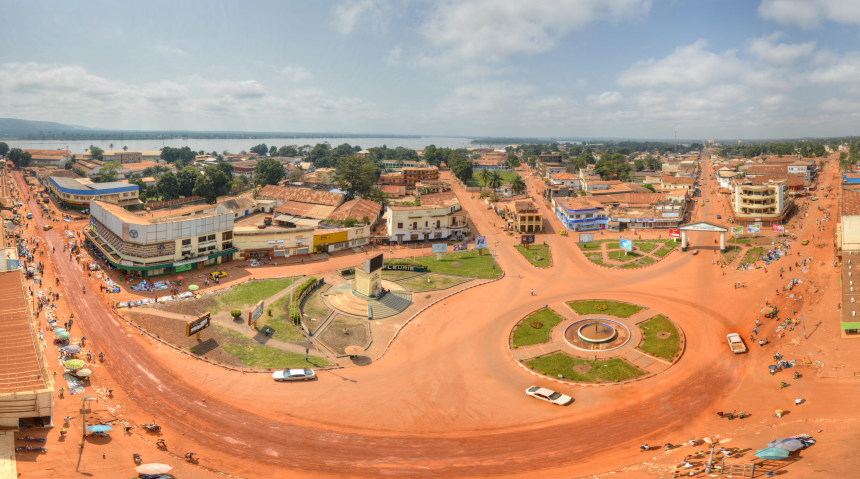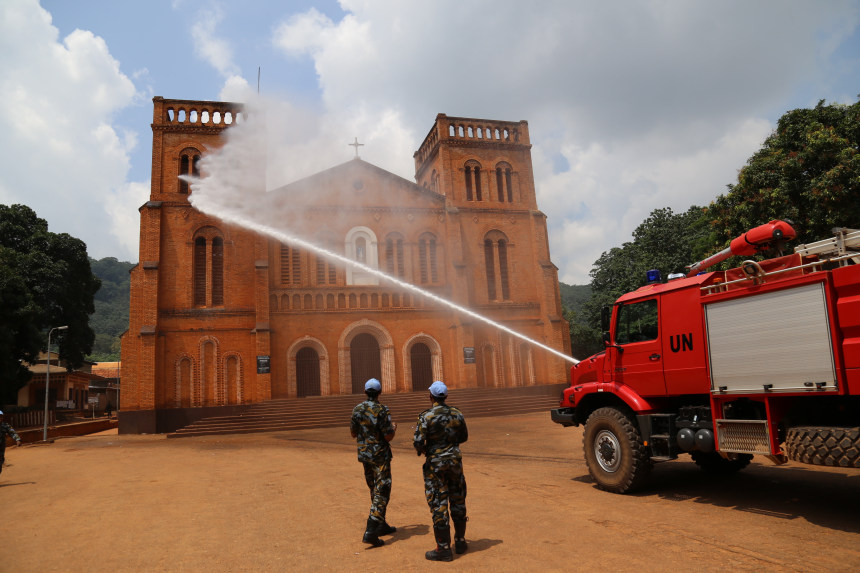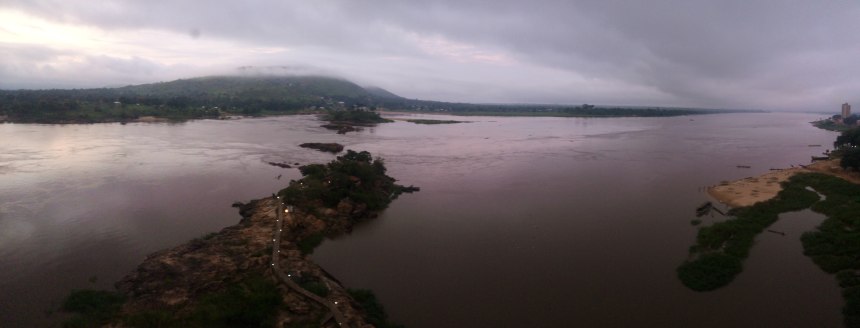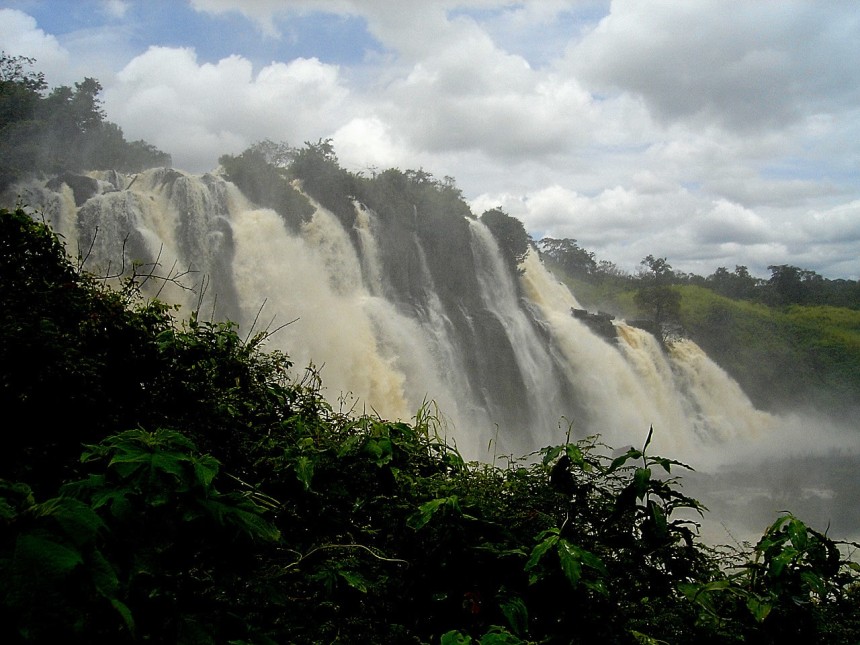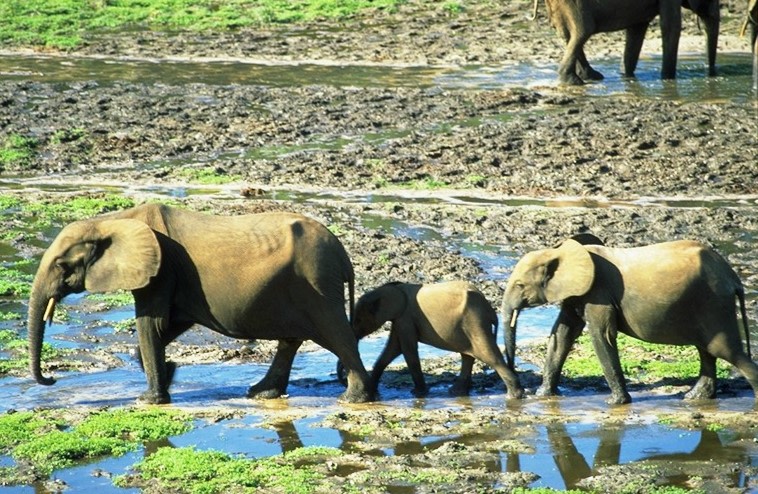| 6 mins read
Craig Taylor
Situated in the centre of the African continent, the Central African Republic is a country with a turbulent past and present. Yet it remains unprecedented in its natural beauty highlighted by land of contrasts from deserts in the north to rain-forests in the south. Here is a Central African Republic travel blog to help encapsulate the essence of the country.
Let’s, begin with the capital city, Bangui.
Bangui, Central African Republic
Home to around 750,000 people, Bangui covers around 67 km2 and is the oldest city in the country. In fact, the French first established a colony in the area as far back as the late 1880s. Bangui is built on the banks of the Oubangui River, one of the largest tributaries of the mighty Congo River, the second-longest on the continent.
Almost all the population in the city speak the local language of the region, Sango although a form of French is also spoken, particular to the country. Like many older cities, Bangui is characterized by an Old Town section with distinct colonial architecture and planning.
Local cuisine: Bangui locals eat many different foods, from grilled meat to various vegetables and side dishes including a variety of carbohydrates such as rice, cassava, plantains, squash, gombo (okra) and pumpkins. Another popular addition to many meals is the humble peanut, while fish dishes are also favoured. These include maboké which has pieces of fish wrapped and steamed in a large banana leaf. A visit to a local restaurant such as "Madame M'boka” is perhaps the best way to sample local food cooked perfectly.
Other eateries, serving French, Lebanese, Chinese and Indian food are also an option when looking for a change of taste. Restaurants to consider include “Relais des Chasses”, “Sale Sucre” and “Ali Baba”. When eating with locals, you may notice they eat with their right hands, without the use of utensils. Feel free to do the same. Never use your left hand, however.
Notre Dame Cathedral of Bangui: An example of stunning French colonial architecture, the Notre Dame Cathedral of Bangui is a Roman Catholic place of worship and a prominent church in the city. Built from red bricks, its beauty is there for all to see and its form has dominated the city since the 1930s when it was first constructed. This is a working church and while you visit, you may find the choir practising, people praying or a mass taking place.
Central Market: Known as the “Marche Central” to the locals, you will find many local artisans, who display their wares, ready to barter for their best price, and they can drive a hard bargain! Here you will find beautiful wood carvings, including African masks as well as artwork, beadwork, African musical instruments and clay pottery for sale.
Oubangui River: Chill out at the cafés on the Oubangui riverbank watching the local fisherman patiently ply their trade. Sightseeing trips along the river reveal local artisans selling their wares for a good bargain.
Presidential Palace and Tomb: The tomb of the former leader of the Central African Republic, Jean-Bedel Bokassa lies in the grounds of the former Presidential Palace or Berengo as it is also known. This once magnificent building has been stripped bare of many of its former glories.
Attractions outside Bangui
Once you venture outside of the capital, your Central African Republic tour guide will be a great source of information as to which locations are a must-visit.
The town of Zinga: Situated on the Oubangui River, just 100 kilometres from the capital of Bangui, Zinga is home to the famous wooden houses, traditional structures built by the locals in the area. These are fine examples of how the people have housed themselves for centuries.
Boali Waterfall: The waterfalls near the town of Boali just over 50 meters high and 250 meters wide offer spectacular photographic opportunities and should certainly form part of your itinerary during your stay in the Central African Republic. The nearby hydroelectric plant provides much of the electricity needs of the country.
Dzanga-Sangha Reserve: Dzanga-Sangha is certainly one of the best nature reserves in the country. Here, you will be able to see a wide range of African wildlife, but the famed gorillas will forever remain etched in your memory. A visit to the Ba'aka people, a pygmy tribe, should also be considered.
Bouar Megaliths
The large stone formations found at Bouar are thought to be as old as Stonehenge. Some of them are up to 5 meters high! Although no human remains have been found here, it is thought that the stones have something to do with ancient burial traditions.
Manovo-Gounda St. Floris National Park
A UNESCO World Heritage site, you will find hectares and hectares of true African savannah, as well as wetlands and other biomes at this almost untouched park. The highly endangered black rhinoceros is one of the beautiful creatures that call the reserve home. These magnificent beasts, along with 56 other mammal species that include the African lion, African wild dog, leopard and cheetah are waiting to be discovered, expertly led by your Manovo-Gouda St. Floris tour guide. For bird lovers, a stopover is essential with 320 different species, including 25 birds of prey.
Note of caution: There is a high travel advisory at present against a visit to the Central African Republic. Always consult with your local authorities before traveling to the Central African Republic as, over the past decades, civil wars and general unrest has been a problem. That said, planning your trip and securing local guides before you go is the best way to prepare for a trip to the country.
"Craig Taylor is a freelance writer and blogger. A lover of wildlife, he loves to travel and have as many new experiences as possible, particularly with food! His other passion is photography."
Image details and licenses
Bangui city: https://images.app.goo.gl/2q6GYfnVLSxhx8F67 (Alllexxxis, CC BY-SA 4.0), Oubangui River: https://flic.kr/p/KzFqha (Adrien Blanc, CC BY 2.0), Notre Dame Cathedral: https://flic.kr/p/BBegpc (United Nations, CC BY-NC-ND 2.0), Boali Waterfalls: https://flic.kr/p/39y1kb (Teseum, CC BY-NC 2.0), Dzanga Sangha Reserve: https://images.app.goo.gl/TbzuU6QvCHJeuz2A8 (Damiano Luchetti)


